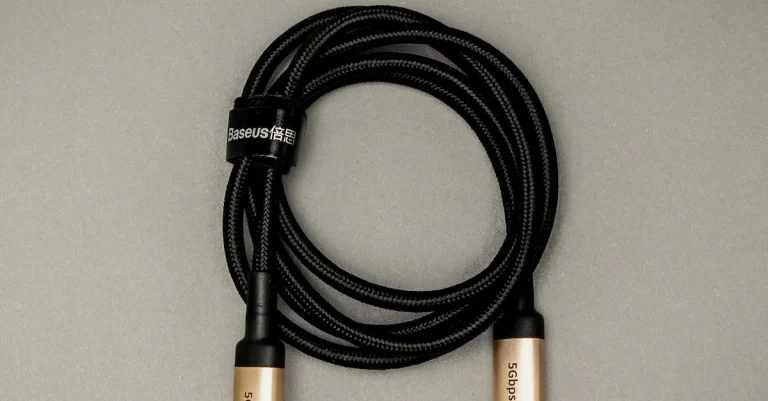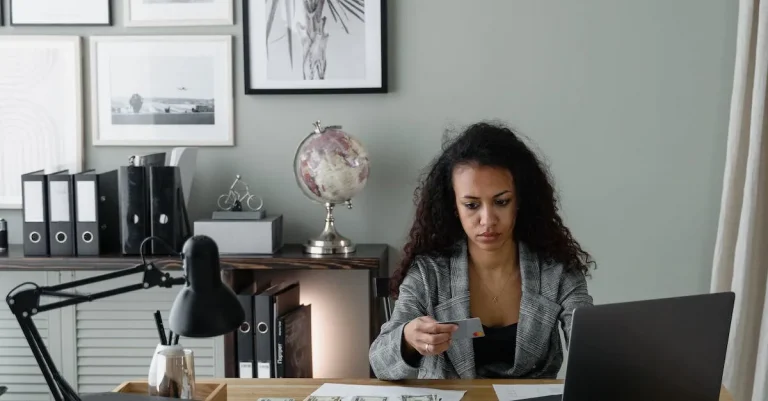How Much Is A 30 Carat Diamond Worth? A Detailed Look At Pricing Factors
Diamonds dazzle with their brilliance and allure, especially large stones over 1 carat.
If you’re wondering about the value of a huge 30-carat diamond, this guide has the details on pricing factors to expect.
If you’re short on time, here’s a quick answer: A 30-carat diamond of high quality could be worth around $5-10 million or more at auction.
In this comprehensive guide, we’ll look at the key elements that impact a 30-carat diamond’s price, from the 4 Cs of clarity, color, cut, and carat weight to the stone’s shape, source, and setting.
We’ll also overview auction sales records for giant diamonds and see how celebrity diamonds stack up. Let’s shine some light on the fascinating world of extra-large diamond values!
Determining the 4 Cs
When it comes to determining the value of a 30-carat diamond, jewelers and experts consider the 4 Cs: Color, Clarity, Cut, and Carat Weight.
Each of these factors plays a significant role in determining the overall worth of a diamond.
Color
The color of a diamond is graded on a scale ranging from D (colorless) to Z (light yellow or brown).
The most valuable diamonds are those that are colorless or near-colorless, as they allow more light to pass through, creating a brilliant sparkle. As you move down the color scale, the value of the diamond generally decreases.
It is important to note that color grading is done under controlled lighting conditions using standardized comparison stones.
Clarity
The clarity of a diamond refers to the presence of any internal or external flaws, known as inclusions and blemishes, respectively.
Diamonds with fewer or no flaws are considered to have higher clarity grades and are more valuable.
The Gemological Institute of America (GIA) grades clarity on a scale ranging from Flawless (no inclusions or blemishes visible under 10x magnification) to Included (inclusions visible to the naked eye).
The clarity grade can significantly impact the value of a 30-carat diamond.
Cut
The cut of a diamond refers to how well it has been shaped and faceted.
The quality of the cut determines how well a diamond reflects and refracts light, ultimately affecting its sparkle and overall beauty.
Diamonds that are cut to precise proportions and angles are more valuable. The GIA grades are cut on a scale from Excellent to Poor, with Excellent being the highest grade. A well-cut diamond will exhibit maximum brilliance and fire.
Carat Weight
The carat weight of a diamond refers to its size and is often the most noticeable factor when determining its value. One carat is equal to 200 milligrams.
Larger diamonds are generally more valuable than smaller ones, assuming all other factors are equal.
However, it is important to note that the value of a diamond is not solely determined by its carat weight. The other three Cs (color, clarity, and cut) also play a significant role in determining the overall worth of a 30-carat diamond.
Impact of Diamond Shape
When it comes to the value of a 30-carat diamond, the shape of the diamond plays a significant role. The shape refers to the overall outline or silhouette of the diamond when viewed from the top.
Different diamond shapes have different price ranges due to variations in demand, cutting style, and rarity.
Round
The round diamond is the most popular and classic shape, known for its brilliant sparkle and timeless appeal. It is also the most expensive shape due to its high demand and the amount of rough diamonds lost during the cutting process.
Round diamonds tend to have a higher price per carat compared to other shapes.
Oval
The oval shape is an elongated version of the round shape, offering a unique and elegant look. It is a popular choice for those looking for a diamond that appears larger in size.
Oval diamonds tend to be less expensive than round diamonds per carat, making them a great option for those looking for value without compromising on the visual appeal.
Pear
The pear shape combines the brilliance of a round diamond with the elongated shape of a marquise diamond. It is a versatile shape that can be worn with the pointed end facing up or down.
Pear-shaped diamonds are often less expensive than round diamonds, making them an attractive choice for those who want a unique and eye-catching diamond without breaking the bank.
Emerald
The emerald shape is a rectangular shape with trimmed corners, known for its elegant and sophisticated look. It is a popular choice for those who prefer a more vintage or Art Deco style.
Emerald-shaped diamonds tend to be less expensive than round diamonds per carat, making them a great option for those looking for a larger diamond at a more affordable price.
Cushion
The cushion shape is a square or rectangular shape with rounded corners resembling a pillow. It is known for its romantic and vintage appeal. Cushion-shaped diamonds can vary in price depending on their cut quality and the presence of any fancy color.
They are often less expensive than round diamonds, making them a popular choice for those seeking a unique and affordable diamond option.
It’s important to note that the prices mentioned here are general guidelines and can vary based on other factors such as diamond color, clarity, and cut quality.
To get an accurate estimate of the value of a 30-carat diamond in a specific shape, it is recommended to consult with a reputable jeweler or use online diamond price calculators.
For more information on diamond shapes and their impact on pricing, you can visit GIA (Gemological Institute of America), a trusted authority in diamond grading and education.
Natural vs Lab-Created Origins
Mined diamonds
When it comes to the origin of a 30-carat diamond, one of the key factors to consider is whether it is a natural or lab-created diamond.
Natural diamonds are formed deep within the Earth’s crust over millions of years. They are mined from various sources around the world, including diamond mines in Africa, Australia, and Canada.
These diamonds are prized for their rarity and unique characteristics, which can affect their value.
Mined diamonds go through a complex process, starting with extraction from the earth and then undergoing cutting, polishing, and grading. The rarity and demand for natural diamonds often drive up their prices.
However, it’s important to note that not all natural diamonds are of high quality or value. Factors such as color, cut, clarity, and carat weight also play a significant role in determining their worth.
When evaluating the value of a 30-carat natural diamond, jewelers and gemologists consider its unique characteristics, including its color grade, clarity grade, and the presence of any internal or external flaws.
These factors, along with market demand and rarity, contribute to the final price of a natural diamond.
Lab-grown diamonds
In recent years, lab-grown diamonds have gained popularity as an alternative to mined diamonds.
These diamonds are created through a process called chemical vapor deposition or high-pressure, high-temperature synthesis, where carbon atoms are arranged in a crystal lattice to form a diamond.
Lab-grown diamonds have the same physical and chemical properties as natural diamonds, but they are created in a controlled environment.
Lab-grown diamonds offer several advantages over natural diamonds.
They are more environmentally friendly, as they eliminate the need for diamond mining. They are also typically more affordable than natural diamonds, making them an attractive option for those looking for a larger diamond at a lower price point.
When it comes to pricing lab-grown diamonds, factors such as size, color, clarity, and cut are still considered. However, lab-grown diamonds are generally priced at a discount compared to their natural counterparts.
This is because the supply of lab-grown diamonds has increased in recent years, making them more accessible and affordable.
It’s important to note that the value of lab-grown diamonds is still influenced by market demand and quality. Higher quality lab-grown diamonds with better color and clarity grades will generally command higher prices.
For more information on natural and lab-grown diamonds, you can visit the following websites:
Notable Auction Sales
The Cullinan
One of the most famous diamonds in the world, the Cullinan diamond was discovered in South Africa in 1905 and weighed a staggering 3,106 carats in its rough form.
After being cut into several smaller diamonds, the largest of which is known as the Cullinan I or the Great Star of Africa, it now weighs 530.2 carats. This magnificent diamond was sold at auction in 2019 for a record-breaking price of $50 million.
The Pink Star
Another noteworthy auction sale was the Pink Star Diamond, a 59.6-carat oval diamond with a stunning pink hue. This diamond was sold for a record-breaking price of $71.2 million at an auction in 2017.
Its exceptional color and flawless clarity contributed to its astronomical value. The Pink Star is a true rarity and a testament to the beauty and allure of colored diamonds.
These notable auction sales demonstrate the immense value and desirability of large and exceptional diamonds.
The Cullinan and the Pink Star are all prime examples of diamonds that fetched extraordinary prices due to their rarity, size, and quality. These diamonds are highly sought after by collectors and investors who recognize their enduring value and beauty.
Celebrity Diamonds
Elizabeth Taylor
When it comes to celebrity diamonds, one name that immediately comes to mind is Elizabeth Taylor. Known for her love of luxury and opulence, Taylor possessed an impressive collection of diamonds throughout her lifetime.
One of her most famous pieces was the Taylor-Burton Diamond, a stunning 69.42-carat pear-shaped diamond. This extraordinary gem was purchased by her husband, Richard Burton, for a record-breaking $1.1 million in 1969.
Today, the estimated value of the Taylor-Burton Diamond is around $30 million, showcasing the enduring appeal of celebrity-owned diamonds.
Kim Kardashian
Kim Kardashian, a prominent figure in the entertainment industry, is no stranger to flaunting extravagant diamonds. One of her most notable pieces is her engagement ring, which features a breathtaking 20-carat emerald-cut diamond.
Given to her by her husband Kanye West, this dazzling rock is estimated to be worth a staggering $4 million.
Kardashian’s affinity for large diamonds is well-known, and she often dons exquisite pieces on red carpets and high-profile events, solidifying her status as a trendsetter in the world of celebrity diamonds.
Beyonce
Beyonce, the queen of pop, is renowned for her show-stopping performances and impeccable style. Her collection of diamonds is as impressive as her talent, with one standout piece being her engagement ring.
Designed by celebrity jeweler Lorraine Schwartz, the ring boasts an impressive 18-carat emerald-cut diamond. The estimated value of this stunning gem is around $5 million.
Beyonce’s choice of a large, high-quality diamond reflects her status as a powerful and influential figure in the entertainment industry.
Celebrity diamonds not only capture our attention but also serve as a testament to the enduring allure of these precious gems.
Whether it’s Elizabeth Taylor’s record-breaking Taylor-Burton Diamond, Kim Kardashian’s extravagant engagement ring, or Beyonce’s stunning Lorraine Schwartz creation, these diamonds symbolize both wealth and glamour.
Their prices are often influenced by factors such as carat weight, cut, color, and clarity, as well as the fame and popularity of the celebrity who owns them.
Conclusion
From the 4 Cs to celebrity rings, many intersecting factors determine the value of a 30-carat diamond.
While it takes an incredibly rare find to unearth a diamond of this size, advancements in lab-growing technology also make it possible to create large diamonds with exquisite quality at a fraction of the price of mined stones.
In the end, a 30-carat diamond’s true worth comes from what it represents to its wearer – a symbol of lasting love, a meaningful investment, or a show-stopping fashion statement.
When you understand all the pricing nuances, you can find the right stone that makes the biggest sparkle for your budget.











